Description
The instruction for medical use of medicine of ROTAZAR PLUS Torgovoye nazvaniye Rotazar Plus the International unlicensed name Is not present the Dosage form of the Tablet, film coated 150 mg / 12.5 mg, Structure One tablet contains active agents: irbesartan 150 mg, hydrochlorothiazide of 12.5 mg, excipients: lactoses monohydrate, cellulose microcrystalline, starch corn partially prezhelatinizirovanny 1500, sodium of a kroskarmelloz, silicon dioxide colloidal anhydrous, magnesium stearate, water purified structure of a cover: Opadri II pink 85F240091 (polyvinyl alcohol, titan dioxide (E171), polyethyleneglycol/macrogoal, talc, ferrous oxide red (E172)). The description of the Tablet of an oval form, biconvex, film coated pink color Pharmacotherapeutic group the Drugs influencing a system renin-angiotensin. Angiotensin II antagonists in a combination with diuretics. Irbesartan in a combination with diuretics. The ATX C09DA04 code the Pharmacological Pharmacokinetics Absorption Later properties of intake of Rotazar Plus the absolute bioavailability of an irbesartan is 60-80%, and a hydrochlorothiazide – 50-80%. After intake the maximum concentration of an irbesartan in blood plasma is reached in 1.5-2 hour, a hydrochlorothiazide – 1-2.5 hours. Distribution Linking of an irbesartan with proteins of blood plasma makes about 96%. The volume of distribution of an irbesartan is 53-93 l. Linking with proteins of plasma of a hydrochlorothiazide makes 68%, distribution volume – 0.83-1.14 l/kg. Concentration in blood serum reach steady value within 3 days after the beginning of therapy. At repeated receptions according to the scheme of 1 times a day the limited accumulation of an irbesartan in blood plasma is observed (& lt, 20%). The linear dependence on a dose in the range of doses from 10 mg to 600 mg is characteristic of pharmacokinetic indicators of an irbesartan. The hydrochlorothiazide gets through a placental barrier, is allocated with breast milk, does not get through a gistogematichesky barrier. Metabolism Irbesartan is metabolized in a liver by conjugation with glucuronic acid and oxidations. The main circulating metabolite is the glucuronide of an irbesartan (about 6%). The researches in vitro demonstrate to what irbesartan is metabolized by oxidation with the participation of CYP2C9. The hydrochlorothiazide is not metabolized. Removal the General and renal clearance makes 157-176 ml/min. and 3.0-3.5 ml/min. respectively. Elimination half-life of an irbesartan – 11-15 hours. Irbesartan and his metabolites are removed with bile and urine. After intake or intravenous administration of a 14C-irbesartan of 20% of radioactivity it is found in urine and traces – in Calais. Less than 2% of not changed irbesartan are allocated with urine. Elimination half-life of a hydrochlorothiazide fluctuates within 5-15 hours. The hydrochlorothiazide is quickly removed by kidneys. At least, 61% of the dose accepted inside are removed in not changed look within 24 hours. Pharmacokinetics in special clinical cases A little higher concentrations of an irbesartan in blood serum were found in women with the increased arterial blood pressure, than in men. However there was no distinction of elimination half-life and accumulation of an irbesartan. Therefore dose adjustment of an irbesartan is not required from women. Than AUC value and the maximum concentration of an irbesartan in blood plasma were slightly higher at patients of advanced age (65 years), than at more young people (up to 65 years are more senior) without essential distinctions of elimination half-life of an irbesartan. Therefore dose adjustment is not required from patients of advanced age. At patients with a renal failure or the being on a hemodialysis, pharmacokinetic parameters of an irbesartan change slightly. Irbesartan is not brought by a hemodialysis. It was reported that at patients with clearance of creatinine & lt, 20 ml/min. increase in elimination half-life was observed till 21 o’clock. At patients with easy and average extent of disturbances of functions of a liver the pharmacokinetic parameters of an irbesartan change slightly. At patients with a severe form of a liver failure the researches were not conducted. A pharmacodynamics the Combined antihypertensive drug, the containing antagonist of receptors of angiotensin II (irbesartan) and thiazide diuretic (hydrochlorothiazide). The combination of these ingredients has additive hypotensive effect, reducing arterial blood pressure in higher degree, than each of them separately. At intake irbesartan is a powerful selection antagonist of receptors of angiotensin II (AT1 type). It blocks all physiologically significant effects of angiotensin II which are implemented through angiotenzinovy AT1 receptors irrespective of a source or a way of synthesis of angiotensin II. Selection antagonistic action concerning angiotenzinovy AT1 receptors leads to increase in plasma concentration of renin and angiotensin II and decrease in plasma concentration of Aldosteronum. At monotherapy irbesartany in the recommended doses at patients without predisposition to disturbances of electrolytic balance the serumal concentration of potassium ions significantly does not change. Irbesartan does not inhibit kininazu-II (angiotensin-converting enzyme (APF)) by means of which there is a formation of angiotensin II and destruction of bradykinin to inactive metabolites. Irbesartan does not affect concentration of uric acid in blood serum and on its discharge kidneys. The hydrochlorothiazide is thiazide diuretic. Thiazide diuretics influence renal mechanisms of a reabsorption of electrolytes, increasing excretion of ions of sodium and chlorine in approximately equivalent quantities. The hydrochlorothiazide reduces blood plasma volume, increases activity of renin in blood plasma and secretion of Aldosteronum with the subsequent increase in maintenance of potassium ions and bicarbonates in urine and decrease in maintenance of potassium ions in blood serum. Presumably, by means of blockade the combined use of an irbesartan leads the system renin-angiotensin-aldosteronovoy (SRAA) to prevention of loss of potassium ions in the blood serum caused by this diuretic. At reception of a hydrochlorothiazide inside the diuretic effect occurs within the first 2 hours, the diuresis reaches a maximum approximately in 4 hours and about 6-12 hours remain. In the range of therapeutic doses the combination of a hydrochlorothiazide and an irbesartan has dose-dependent additive hypotensive effect. Hypotensive action of an irbesartan in a combination with a hydrochlorothiazide is shown after reception of the first dose of drug and remains within 1-2 weeks of reception with the subsequent its gradual strengthening and development of the maximum effect on 6-8 week. The efficiency of drug of Rotazar Plus does not depend on age and sex. Indications – essential arterial hypertension accept the Route of administration and doses of Rotazar Plus 1 time a day irrespective of meal. Rotazar Plus is appointed to patients at whom arterial blood pressure is insufficiently controlled irbesartany or a hydrochlorothiazide in monotherapy. Rotazar Plus of 150 mg / 12.5 mg can be appointed to patients at whom arterial blood pressure is insufficiently controlled by a hydrochlorothiazide (12.5 mg a day) or irbesartany (150 mg a day) in monotherapy. In need of use for patients at whom arterial blood pressure is insufficiently controlled by drug the doses of drugs in a combination can be increased up to 300 mg of an irbesartan and 25 mg of a hydrochlorothiazide a day: 2 tablets of drug of Rotazar Plus of 150 mg / 12.5 mg. The maximum daily dose – 2 tablets of drug of Rotazar Plus of 150 mg / 12.5 mg. Use of loopback diuretics is more preferable. With a renal failure (clearance of creatinine of ≥30 ml/min.) of dose adjustment of drug it is not required from patients. In a liver failure easy and moderate severity (5-6 and 7-9 points on a scale of Chayld-Pyyu) the drug dose decline is not required. It is not required from patients of advanced age of dose adjustment of drug. Side effects Often (& gt, 1/100 to & lt, 1/10) – increase in content of the blood urea nitrogen (BUN), creatinine and creatine kinase, reduction of level of potassium and sodium in blood plasma – dizziness – nausea, vomiting – the complicated urination – fatigue Infrequently (& gt, 1/1,000 to & lt, 1/100) – orthostatic hypotension – diarrhea – a renal failure, including separate cases of a renal failure at the patients who are in risk group – hypostasis of extremities – hyperaemia – disturbance of sexual function, change of a libido Frequency is unknown (it is impossible to estimate on the basis of the available data) – a headache – a ring in ears – cough – dyspepsia, a dysgeusia – arthralgias, myalgias – a hyperpotassemia – cases of reactions of hypersensitivity, such as Quincke’s disease, rash, urticaria – hepatitis, an abnormal liver function the Side reactions registered at monotherapy use irbesartany: Infrequently (& gt, 1/1,000 to & lt, 1/100 – a stethalgia the Side reactions (irrespective of the relation to medicine) registered at monotherapy by a hydrochlorothiazide: Frequency is unknown – an electrolytic imbalance (including a hypopotassemia and a hyponatremia, a hyperuricemia, a glyukozouriya, a hyperglycemia, increase in level of cholesterol and triglycerides) – disturbance of a warm rhythm – aplastic anemia, suppression of activity of marrow, a neutropenia/agranulocytosis, hemolytic anemia, a leukopenia, thrombocytopenia – dizziness, vibration sensitivity, nonsense, concern – temporary turbidity of sight, a xanthopsia – a breath complication (including a pneumonitis and a fluid lungs) – pancreatitis, anorexia, diarrhea, a constipation, irritations of a mucous membrane of a stomach, a sialadenitis, loss of appetite – interstitial nephrite, a renal failure – anaphylactic reactions, a toxic epidermal necrolysis, necrotic anginit (a vasculitis, a skin vasculitis), the skin reactions similar to a lupus erythematosus, a recurrence of a lupus erythematosus, reaction of photosensitivity, skin rash, a small tortoiseshell – weakness, muscular spasms – postural hypotension – fever – jaundice (intra hepatic cholestatic jaundice) – a depression, the Contraindication sleep disorder – hypersensitivity to other derivatives of sulfonamide (the hydrochlorothiazide is derivative sulfonamide) – a renal failure of heavy degree (clearance of creatinine less than 30 ml/min.), an anury (in connection with existence in composition of drug of a hydrochlorothiazide) – a refractory hypopotassemia, a hypomagnesiemia, a hypercalcemia (in connection with existence in composition of drug of a hydrochlorothiazide) – a heavy liver failure (class C / more than 9 points on a scale of Chayld-Pyyu), biliary cirrhosis, a cholestasia (in connection with existence in composition of drug of a hydrochlorothiazide as the minimum disturbances of water and electrolytic balance at such patients can provoke a hepatic coma) – hereditary intolerance of a galactose, insufficiency of lactase or disturbance of absorption of glucose and a galactose – pregnancy and the period of a lactation – children’s age up to 18 years (the efficiency and safety are not established) – hypersensitivity to drug components With care it is necessary to use drug: – in a stenosis of the aortal or mitral valve, a hypertrophic subaortic stenosis – in dehydration, a hyponatremia, diarrhea, vomiting, observance of a diet with restriction of consumption of table salt, treatment by diuretics (risk of developing the profound arterial hypotension) – in a bilateral or unilateral stenosis of renal arteries, chronic heart failure of the III-IV functional class on classification of NYHA (as well as at use of other means influencing RAAS it is impossible to exclude presence of risk of developing arterial hypotension, an oliguria and/or azotemia and the progressing acute renal failure), – in coronary heart disease and/or atherosclerotic defeat of vessels of a brain (risk of strengthening of ischemia of a myocardium or brain up to development of a myocardial infarction or a stroke at excessive decrease in arterial pressurecc) – in a renal failure easy and moderate severity (clearance of creatinine from 60 to 30 ml/min.), a hemodialysis (risk of increase in an azotemia in connection with existence in composition of drug of a hydrochlorothiazide and development of a hyperpotassemia in connection with existence in composition of drug of an irbesartan) – after transplantation of a kidney (lack of experience of clinical use) – in a liver failure (classes A and V/5-6 of points and 7-9 points on classification of Chayld-Pyyu) – in diabetes (in connection with existence in composition of drug of a hydrochlorothiazide the decrease in tolerance to glucose is possible), – at the increased level of cholesterol and triglycerides in blood (in connection with existence in composition of drug of a hydrochlorothiazide as thiazide diuretics, especially in high doses, can increase the level of cholesterol and triglycerides in blood) – in gout (in connection with existence in composition of drug of a hydrochlorothiazide the increase in concentration of urates in blood is possible) – at a hyperpotassemia, a concomitant use of kaliysberegayushchy drugs and/or containing potassium, salt substitutes (risk of a hyperpotassemia) – at a system lupus erythematosus (in connection with existence in composition of drug of a hydrochlorothiazide the exacerbation of this disease) – is possible at a concomitant use of other antihypertensives (possibility of potentiation of their hypotensive action) – in latentno the proceeding hyperparathyreosis (in connection with existence in composition of drug of a hydrochlorothiazide as thiazide diuretics, especially in high doses, increase risk of development or strengthenings of a hypercalcemia), – after sympathectomy (risk of strengthening of hypotensive effect of a hydrochlorothiazide) – at a concomitant use of salts of lithium (the hydrochlorothiazide increases risk of toxic effect of lithium). Medicinal interactions the Hypotensive effect of drug of Rotazar Plus can be enhanced by simultaneous use of other antihypertensives, especially ganglioblokator, beta blockers, diazoxide. Irbesartan and a hydrochlorothiazide were safely applied in combination with other antihypertensives, including blockers of slow calcium channels and beta blockers. Preliminary therapy by diuretics in high doses can lead to a hypovolemia and risk of arterial hypotension. Diuretics reduce renal clearance of lithium and increase risk of development of toxic effects of lithium. Use of a combination of drug of Rotazar Plus with drugs of lithium is not recommended. If this combination after all is necessary, then it is necessary to monitorirovat serumal concentration of lithium. Removal of potassium at reception of a hydrochlorothiazide decreases thanks to kaliysberegayushchy effect of an irbesartan. However this effect of a hydrochlorothiazide can be enhanced by other medicines causing loss of potassium and a hypopotassemia (for example: diuretics, laxatives, Amphotericinum, karbenoksolony, sodium salt of penicillin G, derivatives of salicylic acid). At combined use of cardiac glycosides, antiarrhytmic means with drug of Rotazar Plus, in case of the emergence of a hypopotassemia and a hypomagnesiemia caused by the thiazide diuretic which is its part the danger of developing of arrhythmias including posing hazard to life increases. At use of such combinations carrying out regular control of level of potassium in blood serum is required. At simultaneous use of antagonists of angiotensin II and non-steroidal anti-inflammatory drugs (NPVP) (for example, selection inhibitors of cyclooxygenase-2, acetylsalicylic acid more than 3 g a day and non-selective NPVP) there can be an easing of hypotensive effect of drug of Rotazar Plus due to decrease in efficiency of a hydrochlorothiazide. As well as in a case with APF inhibitors, combined use of antagonists of angiotensin II and NPVP can increase risk of a renal failure, including the probability of an acute renal failure and lead to increase in content of potassium in blood serum, especially at patients with already impaired renal function. This combination should be applied with care, especially at patients of advanced age. At use of this combination the patients should not be dehydrated. The pharmacokinetics of an irbesartan at its combination to a hydrochlorothiazide and nifedipine does not change. Irbesartan is generally metabolized by CYP2C9 and to a lesser extent – by a glyukuronization. It was not observed considerable pharmacokinetic and a pharmakodinamicha
of whom of interaction when irbesartan it is applied together with warfarin, the drug which is exposed to metabolism with participation of CYP2C9. Influence of the inductors CYP2C9, such as rifampicin, on pharmacokinetics of an irbesartan was not estimated. The pharmacokinetics of digoxin did not change at combined use with irbesartany. At simultaneous use with thiazide diuretics of ethanol, barbiturates or anesthetics strengthening of orthostatic hypotension can be observed. At use of a hydrochlorothiazide the dose adjustment of hypoglycemic means as the hydrochlorothiazide can increase glucose level in blood can be required. At simultaneous use of a hydrochlorothiazide and glucocorticosteroids or adrenocorticotropic hormone, perhaps more significant disturbance of electrolytic balance, in particular, strengthening of a hypopotassemia. Reduction of efficiency of catecholamines (for example, Norepinephrinum) under the influence of a hydrochlorothiazide is possible. The effect of not depolarizing muscle relaxants can be enhanced by a hydrochlorothiazide. At simultaneous use of drug of Rotazar Plus and antigouty means the increase in a dose of antigouty means as the hydrochlorothiazide is capable to increase the level of uric acid in blood serum can be required. Increase in doses of a probenetsid or Sulfinpyrazonum can be required. Combined use with thiazide diuretics can increase the frequency of allergic reactions to Allopyrinolum. Thiazide diuretics are capable to increase calcium level in blood serum because of reduced removal. If the calcic additives or drugs influencing calcium level (for example have to be appointed, at therapy by vitamin D), then control of level of calcium in blood serum and carrying out the corresponding dose adjustment of drug of calcium is necessary. Thiazide diuretics enhance hyper glycemic effect of beta blockers and diazoxide. Anticholinergics (for example, atropine) can increase bioavailability of thiazide diuretics owing to decrease in motility of digestive tract. Tiazida are capable to increase risk of development of side effects of an amantadin. Tiazida can reduce discharge with urine of cyclophosphamide and a methotrexate and to enhance their myelosuppressive effect. The special instructions Hypotension – patients with the lowered volume of the circulating blood: Rotazar Plus seldom causes symptomatic hypotension, in the absence of other risk factors of development of this state. Symptomatic hypotension is possible at patients with a reduced intravascular volume and (or) with the reduced level of sodium as a result of intensive diuretic care, dietary restriction of salt, a diarrhea or vomiting. Before starting therapy by drug of Rotazar Plus, it is necessary to carry out correction of such states. A renal artery stenosis – renovascular hypertensia: patients with a bilateral renal artery stenosis or a stenosis of an artery of the only functioning kidney have an increased risk of heavy hypotension and renal failure in case of treatment by APF inhibitors or antagonists of receptors of angiotensin II. Despite the lack of documentary cases with Rotazar Plus, it is worth to remember about a possibility of similar effect. Renal failure and transplantation of a kidney: in case of use of Rotazar Plus by patients with a renal failure, it is necessary to control periodically levels of potassium, creatinine and uric acid in serum. Patients do not have experience appointed by Rotazar Plus with recent transplantation of a kidney. Rotazar Plus should not be applied in case of a heavy renal failure (clearance of creatinine & lt, 30 ml/min.). In a renal failure the development of the azotemia connected with use of thiazide diuretics is possible. In case of a renal failure with clearance of creatinine & gt, 30 ml/min. there is no need for dose adjustment. However in a renal failure of light and average severity (clearance of creatinine of ≥30 ml/min., but & lt, 60 ml/min.) this combined drug has to be appointed with care. Double blockade system renin-angiotensin-aldosteronovoy (SRAA): combined use of Rotazar Plus and an aliskiren as risk of developing hypotension, a hyperpotassemia and a renal failure increases is not recommended. Use of drug of Rotazar Plus in combination with the drugs containing aliskiren at patients with diabetes and at patients with a renal failure of average and heavy severity (glomerular filtration rate & lt, 60 ml/min. / 1.73 sq.m) is contraindicated. Liver failure: at patients from the liver broken by function or with the progressing liver disease thiazide diuretics should be applied with care as little changes of water and electrolytic balance can provoke a hepatic coma. There is no clinical experience on use of Rotazar Plus by patients with a liver failure. Stenosis of aortal and mitral valves, subaortic hypertrophic stenosis: as well as in a case with other vazodilatator, the extra care when prescribing drug is necessary for the patients having a stenosis of the aortal or mitral valve, or a subaortic hypertrophic stenosis. Primary aldosteronism: patients with primary aldosteronism usually do not react to the antihypertensive medicines suppressing renin-angiotenzinovuyu a system. Therefore, use of Rotazar Plus is not recommended. Metabolic and endocrine effects: therapy of a tiazidama can reduce tolerance to glucose. Correction of doses of insulin and oral anti-diabetic medicines at patients with diabetes can be required. Therapy of a tiazidama can cause a demonstration of latent diabetes. Therapy by thiazide diuretics can be followed by increase in levels of cholesterol and triglycerides, but at the dose of 12.5 mg which is contained in drug the minimum effects or absence them are registered. At some patients the development of a hyperuricemia or even gout at treatment of a tiazidama is possible. Disturbance of electrolytic balance: as well as in case of any patient receiving diuretic therapy it is necessary periodically, with observance of the corresponding intervals to control electrolytes in blood serum. Tiazida, including a hydrochlorothiazide, can cause disturbance of water and electrolytic balance (hypopotassemia, a hyponatremia and a gipokhloremichesky alkalosis). The signs indicating disturbances of water and electrolytic balance are: dryness in a mouth, thirst, weakness, a lethargy, a drowsy state, concern, muscular pains or spasms, muscle weakness, hypotension, an oliguria, tachycardia and gastrointestinal disorders, such as nausea or vomiting. In spite of the fact that at use of thiazide diuretics the hypopotassemia is possible, simultaneous treatment irbesartany can reduce the hypopotassemia caused by diuretics. The risk of a hypopotassemia is highest at patients with cirrhosis, a profound diuresis, inadequate oral administration of electrolytes and at at the same time carried out therapy by corticosteroids or adrenocorticotropic hormone. On the contrary, because of existence in Rotazar Plus of an irbesartan the development of a hyperpotassemia is possible, especially, in a renal failure and/or heart failure, and diabetes. It is necessary to carry out the corresponding monitoring of level of potassium in serum at patients of risk group. It is necessary to be careful when assigning together with Rotazar Plus of kaliysberegayushchy diuretics, potassium additives or kaliysoderzhashchy solezamenitel. There are no proofs that irbesartan reduces or prevents development of the hyponatremia caused by diuretics. The shortage of chloride, as a rule, is moderate and usually does not demand treatment. Tiazida can reduce removal of calcium with urine and cause periodic and small increases in level of calcium in serum in the absence of the known disturbances of exchange of calcium. The expressed hypercalcemia can indicate a latent hyperparathyreosis. Before investigating function of epithelial bodies, it is necessary to cancel thiazide diuretics. It was shown that tiazida increase removal of magnesium with urine that can lead to a hypomagnesiemia. Lithium: the lithium combination with Rotazar Plus is not recommended. Doping test: the hydrochlorothiazide which is contained in this medicine can become the reason of positive take of laboratory test on doping identification. General instructions: at patients with a vascular tone and function of kidneys, dependent, generally from activity system renin-angiotensin-aldosteronovoy (for example, at patients with heavy stagnant heart failure or with a disease of kidneys, including a renal artery stenosis), therapy by APF inhibitors or antagonists of receptors of angiotensin II is followed by acute hypotension, an azotemia, an oliguria and, in rare instances, an acute renal failure. As well as in case of any antihypertensive medicine, the excessive lowering of arterial pressure with an ischemic cardiopathy or obliterating cardiovascular diseases can cause a myocardial infarction or a stroke of a brain in patients. Hypersensitivity reactions on a hydrochlorothiazide are possible as in the presence in the anamnesis of an allergy or bronchial asthma, and without them, however, they are more probable at patients with these associated diseases. At use of thiazide diuretics the aggravation or strengthening of a degree of activity of a system lupus erythematosus is registered. When using thiazide diuretics, cases of reactions of a svetochuvststvitelnost were noted. In case of development during treatment of such reaction it is recommended to stop therapy. In case of need repeated prescribing of diuretics it is recommended to protect open sites of skin from impact of sunlight and artificial ultraviolet radiation. Lactose: Rotazar Plus contains lactose therefore it should not be applied in the presence of rare inherited disorders of shipping of a galactose, deficiency of lactase and a syndrome of the broken absorption of glucose and a galactose. Acute shortsightedness and secondary acute closed-angle glaucoma: streptocides or derivatives of sulfonamide, can cause the reactions of an idiosyncrasy leading to development of passing shortsightedness and acute closed-angle glaucoma. In spite of the fact that the hydrochlorothiazide is derivative sulfonamide, so far was reported only about separate cases of acute closed-angle glaucoma without establishment of cause and effect interrelation with its reception. Symptoms of acute closed-angle glaucoma are: the acute decrease in visual acuity or eye pain which are usually arising during the period from several hours to several weeks after the beginning of administration of drug. The acute closed-angle glaucoma left without treatment can lead to permanent loss of sight. At emergence of these symptoms it is necessary to stop administration of drug as soon as possible. If at the same time it is not possible to normalize intraocular pressure, then urgent therapeutic or surgical treatment can be required. Risk factors for development of acute closed-angle glaucoma are instructions in the anamnesis on allergic reactions to streptocides and penicillin. Drug children are not recommended to appoint use in pediatrics aged up to 18 years. Pregnancy and a lactation Use of drug of Rotazar Plus is contraindicated at pregnancy and a lactation. Features of influence of medicine on ability to run the vehicle or potentially dangerous mechanisms Influence of drug of Rotazar Plus on ability to be engaged in the types of activity requiring special attention was not studied, however, based on its pharmakodinamichesky properties, drug should not affect this ability. When driving motor transport it is necessary to consider that during treatment the dizziness and the increased fatigue is possible. Overdose Symptoms: At overdose of an irbesartan are most probable: the profound lowering of arterial pressure, tachycardia, bradycardia, at overdose of a hydrochlorothiazide: a hypopotassemia, a hyponatremia, dehydration as a result of an excess diuresis. The most general signs and symptoms of overdose – nausea and drowsiness. The hypopotassemia can lead to spasms and/or strengthening of arrhythmias in case of the accompanying use of glycosides of a foxglove and antiarrhytmic means. Treatment: In case of overdose the careful control of a condition of the patient is required, therapy has to be symptomatic and supporting. Treatment depends on time which passed from the moment of intake of medicine and on weight of symptoms. The recommended measures – provoking of vomiting and/or gastric lavage, use of activated carbon, careful control of a condition of the patient, performing symptomatic and maintenance therapy. It is necessary to carry out regular control of content of electrolytes and creatinine in blood serum. In case of arterial hypotension of the patient it is necessary to lay on a back with the raised lower extremities and as soon as possible to carry out compensation of salts and liquid. Irbesartan is not brought at a hemodialysis. The form of release and packing On 14 tablets place in blister strip packaging from a film of polyvinylchloride and aluminum foil. On 2 planimetric packs together with the instruction for medical use in the state and Russian languages place in a pack from cardboard Storage conditions to Store at a temperature not above 25ºС. To store out of children’s reach! 3 years not to apply a period of storage after an expiration date. Prescription status According to the prescription the Producer/packer “Uorld Meditsin Ilach Sang. ve Tidzh. A.Sh.”, Turkey (Bagdzhylar Ilchesi, Gyuneshli, Evren Makhallesi, Dzhami Yolu Dzhad. No. 50 K. 1B Zemin 4-5-6, Istanbul) ‘World Medicine İlaç San. ve Tic. A.Ş.’, Turkey the Owner of the registration certificate of “ROTAFARM ILACHLARY LIMITED of SHIRKETI”, Turkey the Address of the organization accepting in the territory of the Republic of Kazakhstan claims from consumers on quality of products of RK, Almaty, TROKA-S PHARMA LLP, Turksibsky district, Suyunbaya Ave., 222b Ph. / fax: 8 (7272) 529090 The address of the organization responsible for post-registration observation of safety of medicine of TROKA-S PHARMA LLP acting through Toleuisheva Sandugash, Almaty, Suyunbaya Avenue 222-b
to Develop
Additional information
| Ingredient |
|---|





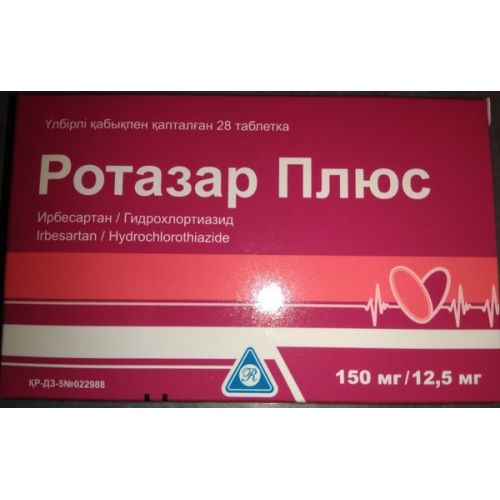
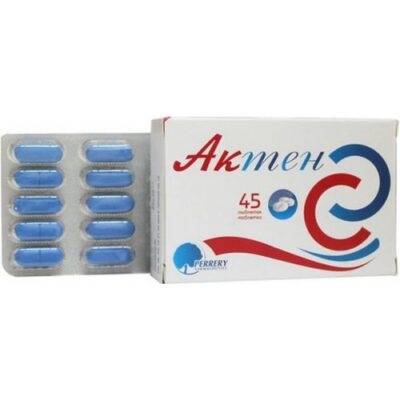
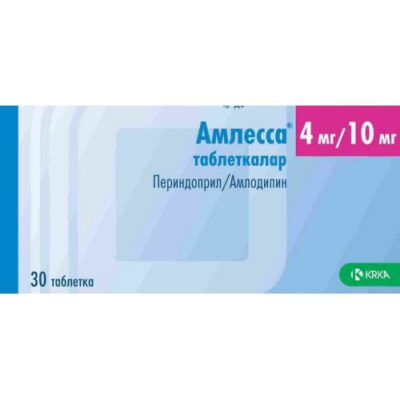
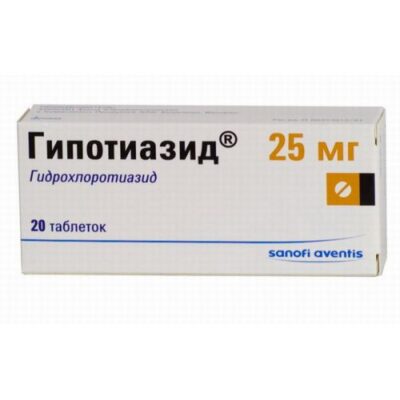
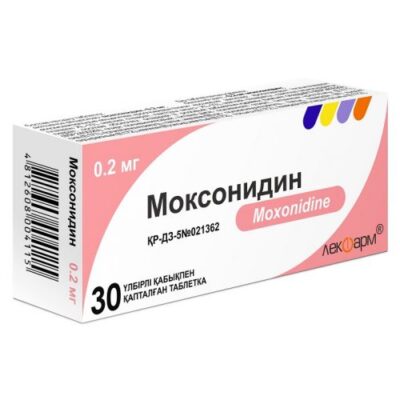
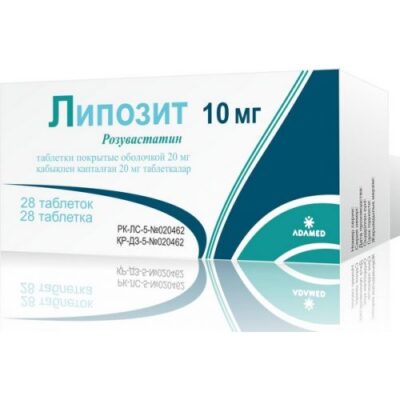
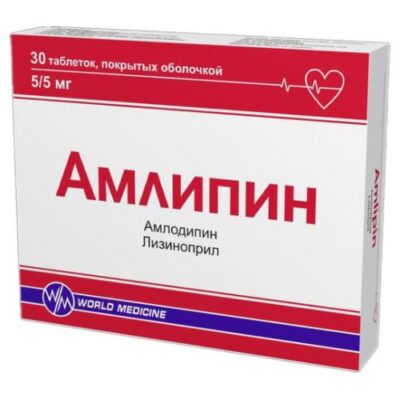
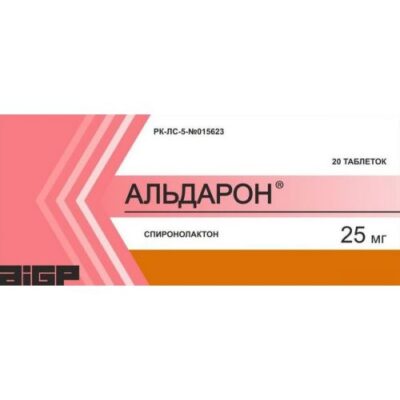
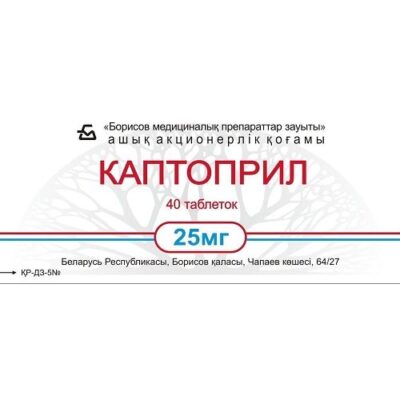
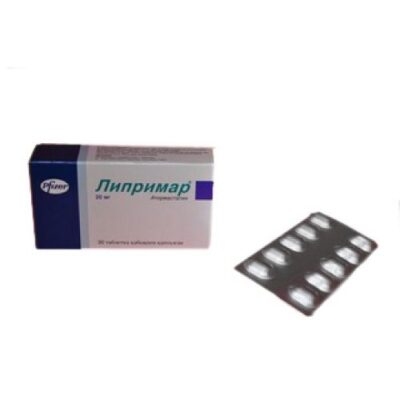
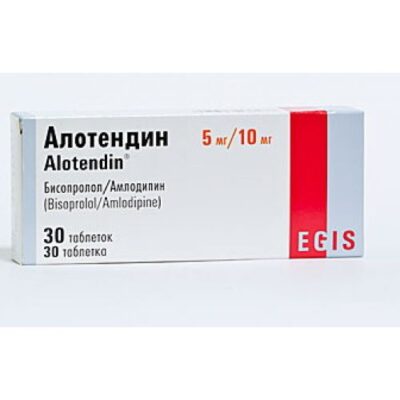






Reviews
There are no reviews yet.